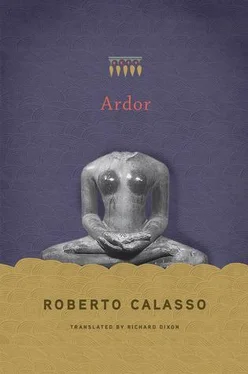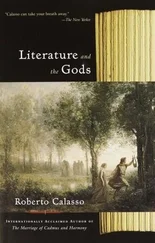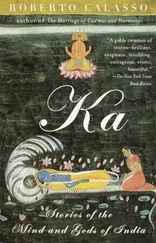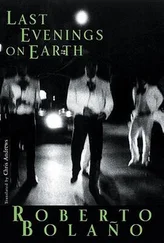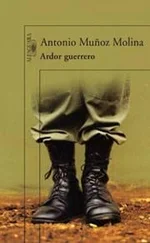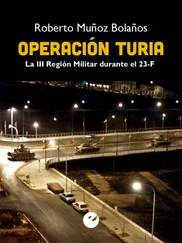The unstoppable effusions of the Brāhmaṇa are followed and contrasted by the highly condensed Upaniṣad. What remains is the flash of equivalences: as dawn rises the young girl Uṣas is superimposed on the head of the sacrificial horse; the eye — anticipating Goethe — is the sun; fire and wind go deep into the body of every man. For all this we have been prepared by the “hundred paths”—intersecting, tortuous, rough and arduous — of the Brāhmaṇa. Only after traveling them does the view unfold in its full splendor.
There is no doubt, though, that in the Upaniṣads we see a tendency to give little value to knowledge gained through works and a parallel praise of knowledge detached from all action. It is the earliest gnosis, a model for all others. But it would be naïve and misleading to imagine that such a distinction was not already clear to the authors of the Brāhmaṇas, almost as if they were superstitious liturgical craftsmen, ignorant of metaphysics. The opposite was true — and from time to time they would refer with dry irony to what would, over the centuries, turn out to be the central point: “When they said ‘either through knowledge or through work’: it is the fire that is knowledge; it is the fire that is holy work.” An apparently superfluous comment, which touches, however, on a key question. Two types of knowledge are thus established: the first is knowledge that need not be combined with visible acts; the other is knowledge as liturgical acts. At this stage, the shocking innovation lay in the first type of knowledge, which would then develop into the figure of the renouncer — and from there into every theoretical inquiry considered as the natural and appropriate condition of thought. In fact, what one day would become philosophizing, detached from any kind of ritual gesture, was the final outcome of a long process, a process in the course of which the crucial step was the internalization of the agnihotra , the first and most simple of sacrifices. And what could be done with the agnihotra could also be done with the most complicated rite, the agnicayana , the building of the fire altar.
But this step is important not only in distinguishing between the two regimes of knowledge. It is just as important in showing that the object of knowledge is still the same: the fire altar. When even knowledge is detached from every liturgical act, becoming pure construction and contemplation of relationships, such relationships would still remain the same ones expressed through that splayed wall of bricks built and then abandoned in a forest clearing. This is what the Vedic ritualists wanted to keep in mind; this would be the point on which they would clash with the Buddha, who wanted only to extinguish the fire.
The authors of the Brāhmaṇas paid meticulous attention to the world of desires (and of sacrifice insofar as it is based on desire), but they already saw perfectly well that the ultimate dividing line was between that world and what happens when desire no longer exists: “Regarding this there is the verse ‘Through knowledge they ascend to that state where desires have vanished’: one cannot get there with ritual fees and those practicing tapas do not get there without knowledge.” With these words the paths of knowledge and sacrifice separate for the first time. Sacrifice, which arises out of desire (“Prajāpati desired” is said countless times — and every sacrificer, like him, says the same), cannot reach the point where “desires have vanished.” Knowledge, which until then was equivalent to sacrifice, now appears as the path that allows access to a point that will never be reached by the sacrificial act. We are now in the realm of the Upaniṣads — if by this we mean that the question of knowledge is now to be posed in terms that will be followed by the Buddha (or Spinoza).
* * *
How do we heal an error that is always lurking in an imprecise gesture, in an inappropriate word? The gods were the first to ask the question, to Prajāpati. He replied with a concise and definitive lesson on methodology: “One heals the Ṛgveda with the Ṛgveda , the Yajurveda with the Yajurveda , the Sāmaveda with the Sāmaveda. As one would put together joint with joint, so he puts them [the parts of the sacrifice] together whoever heals by means of these words [the three ‘luminous essences,’ which are bhūr, bhuvas, svar , corresponding respectively to the three Vedas]. But, if he heals them in any other way than this, it would be like someone trying to put together something broken with something else that is broken, or as if a poison were applied as a balm for a fractured limb.” This rule is also valid for the study and interpretation of the Veda. Bergaigne obeyed it in his Religion védique , illuminating the Ṛgveda with the Ṛgveda and nothing else. The Śatapatha Brāhmaṇa is waiting in the same way for a future scholar to fathom it in its entirety, as an immense opus dedicated to the opus of sacrifice. But the Brāhmaṇas have the peculiar characteristic of causing Indologists to lose their tempers. It’s an age-old tradition. As old as the work of those intrepid scholars (such as Eggeling or Keith) who devoted several decades to translating and annotating them. We might imagine that the impressive quantity of studies amassed, beginning with Sylvain Lévi’s illuminating Doctrine du sacrifice dans les Brâhmanas (1898), would have radically changed this attitude. But it hasn’t. After more than a hundred years, it reemerges unchanged — paradoxically in an otherwise fascinating book by Frits Staal, one of the greatest experts on the Brāhmaṇas.
According to Staal, the Brāhmaṇas are an undigested hotchpotch, inside which the sober eye of the scholar has to “ferret out” (the verb is repeated within a few pages) some rare insight. The “most suspect” of all is the Śatapatha Brāhmaṇa. One has the feeling that Staal would like to go further in deploring these texts that contain “a great deal of what we may call magic but is better, more truthfully and less condescendingly or insultingly described as simple superstition.” At this point he stops and asks, with haughty benevolence: “But should we not be charitable?” The answer follows immediately — and is less benevolent: “We should be, but there is a limit even to charity.” We can infer from this that the Brāhmaṇas, after almost three thousand years, still have no right to the Western scholar’s “charity.” And yet, from what texts other than the Brāhmaṇas has most of the knowledge been taken that infuses the work of some of the greatest scholars on ancient India — Caland or Renou or Minard or Mus or Oldenberg or Malamoud? Or Staal himself?
We might ask why the Brāhmaṇas above all, among the whole of the Veda, arouse such irritation. Perhaps the answer is to be found in the word that Staal, with his vehement prose, would like to expunge not only from Vedic ritual, but from ritual in general: meaning (the intention is declared in exemplary fashion in the title of an important book of his: Rules Without Meaning ). The assumption — unspoken, but increasingly apparent over the years — is that, wherever meaning appears (and not just in Vedic ritual, but everywhere and always), everything tends to become obscure and arbitrary, destroying the noble transparency of science. In Staal there is a violent and preposterous contrast between his devotion and expertise in studying Vedic ritual and his contemptuous and ill-concealed intolerance toward the oldest texts in which those rites are described and explained. This intolerance grows from the hypertrophy of meaning that marks the Brāhmaṇas, and induces him to take refuge in the opposite extreme, in the realms of algebra and formalization, areas uncontaminated by that unwelcome guest: semantics. Staal’s theory, reduced to its bluntest and most provocative form, states that the rite is carried out for the rite itself , as if “art for art’s sake” could be applied several thousand years retrospectively and could indeed serve as a prelinguistic basis for human activity. A bold approach that doesn’t stand up to investigation. But Staal has used it because he has been struck by the very high degree of formalization (and a tendency toward algebrization) found in Vedic ritual. His studies of certain ritual sequences, above all those where recursive methods are applied, are in fact illuminating.
Читать дальше
